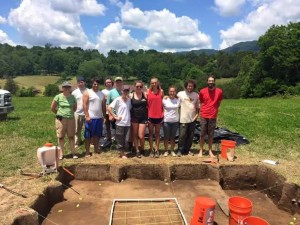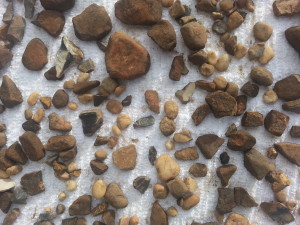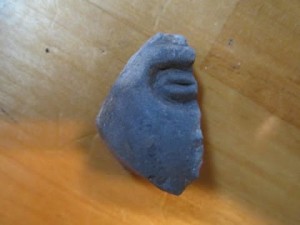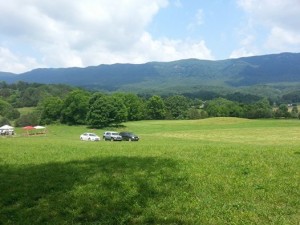 As students packed up and headed home, I returned to Oxford at the end of the field school, and after a brief rest, began the other work of archaeology: analysis and writing. First, though, was the matter of unpacking and organizing equipment, paperwork, and artifacts. The TA, Hamilton Bryant, finished the last of the washing (most of which was done in the field) and is finishing the cataloging of all the artifacts. Once that is finished, we can begin the task of analysis.
As students packed up and headed home, I returned to Oxford at the end of the field school, and after a brief rest, began the other work of archaeology: analysis and writing. First, though, was the matter of unpacking and organizing equipment, paperwork, and artifacts. The TA, Hamilton Bryant, finished the last of the washing (most of which was done in the field) and is finishing the cataloging of all the artifacts. Once that is finished, we can begin the task of analysis.
There’s an old saying in archaeology that for every one hour in the field, you can (and should) expect to spend three hours in the lab, and this is pretty true. While fieldwork is physically demanding, and  sometimes grueling in the Southeastern heat, lab work is demanding and even grueling in a different way. First, it requires concentration. Second, it requires attention to detail, which after 8 hours day in and day out, can be exhausting. Third, it requires a daily slog through analysis. While we do have interesting artifacts that I am excited to analyze, what we mostly have are thousands of ceramic sherds and lithic flakes, all of which need to by counted and quantified in some way.
sometimes grueling in the Southeastern heat, lab work is demanding and even grueling in a different way. First, it requires concentration. Second, it requires attention to detail, which after 8 hours day in and day out, can be exhausting. Third, it requires a daily slog through analysis. While we do have interesting artifacts that I am excited to analyze, what we mostly have are thousands of ceramic sherds and lithic flakes, all of which need to by counted and quantified in some way.
However, it is in this minutiae of detail that the larger pattern emerges of the past culture. Just like the sometimes painstaking removal of layers of human occupation slowly reveals the bigger picture—as in this year’s structure we uncovered—so does the accumulation of data from the thousands of artifacts  reveal what was occurring within that structure. Ideally we’ll be able to reconstruct where people prepared food, ate food, made tools, and lived. This is the goal of archaeology, to reconstruct past cultures. While the big finds are exciting, and garner lots of attention, it is the smaller, less exciting finds that in the end provide most of the information about the lives of the people who lived there.
reveal what was occurring within that structure. Ideally we’ll be able to reconstruct where people prepared food, ate food, made tools, and lived. This is the goal of archaeology, to reconstruct past cultures. While the big finds are exciting, and garner lots of attention, it is the smaller, less exciting finds that in the end provide most of the information about the lives of the people who lived there.
And that is where the interest in archaeology lies for me. We can all read about famous people from various cultures’ pasts, including our own, but I do archaeology to reconstruct how the majority of people lived in a culture. In the movie “It’s A Wonderful Life” the main character, George Bailey, reminds the banker Mr. Potter that “this rabble you’re talking about does most of the working and living and dying in this town.” It’s those lives that are not recorded and easily forgotten, and archaeology has the ability to bring those lives to the forefront. So as I settle in for the rest of the summer to count, weigh, and quantify artifacts, I try to remember the big picture that each artifact helps create.
Thanks to the crew and our TAs, for all their hard work that makes this reconstruction possible. And thanks to Martha Grace Mize for creating this website, and Nikki Matson for her educational outreach efforts. Both her and Martha Grace’s work was supported by grants from the Council of Virginia Archaeologists.